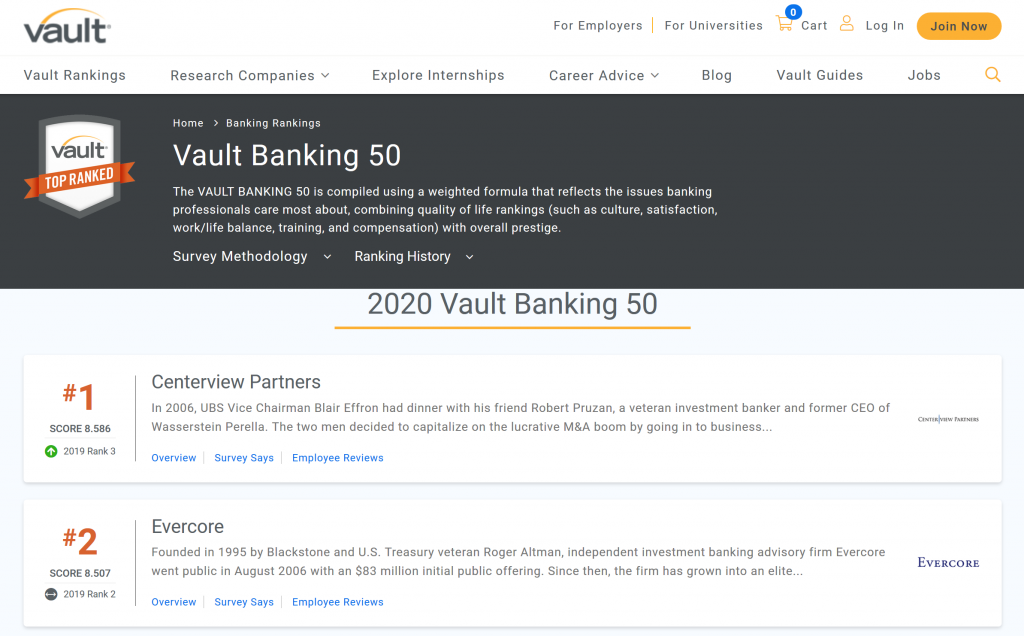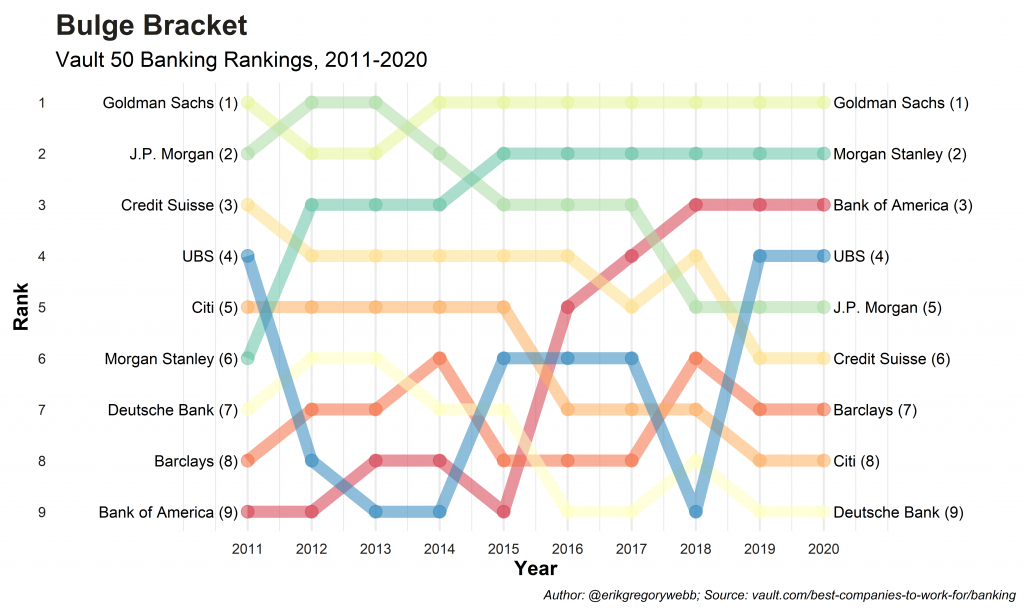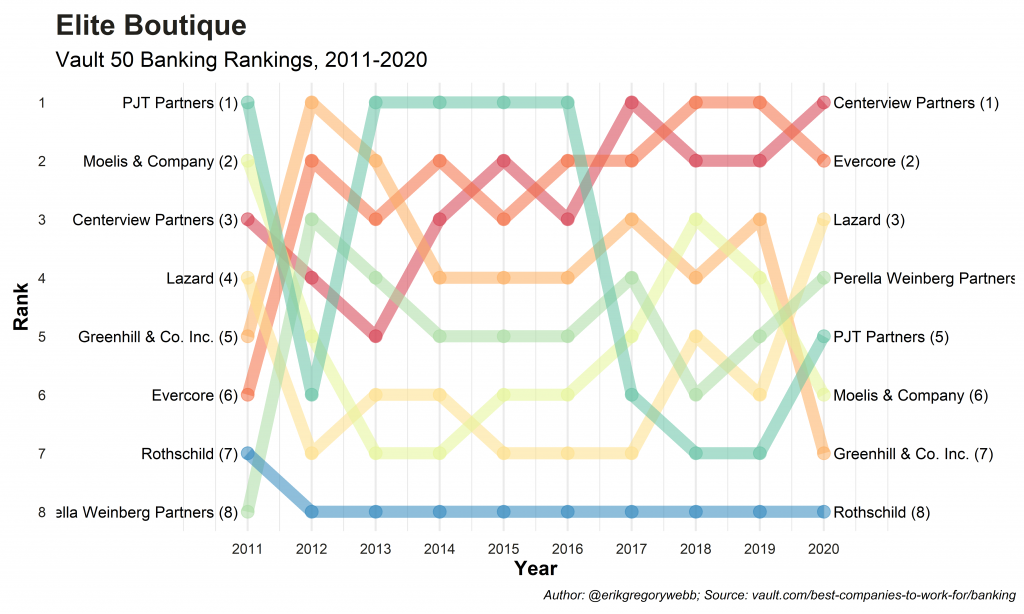As a society, we love to rank things. We rank colleges (US News & World Report), companies (Fortune 500), sports teams (AP Top 25 Poll), and even people (IMBd STARmeter).
Sometimes rankings are useful, since they collapse many data points into a single metric, allowing for easy comparison. The problem is when rankings build on subjective methodologies or abstract criteria are taken as absolute truth, rather than a directional guide.
With that disclaimer as backdrop, it’s no surprise that Vault.com surveys professionals to rank the top employers in industries like law, consulting, and banking. The rankings they produce are based on surveys that try to measure things like prestige, culture, satisfaction, work/life balance, training, and compensation.

Obviously, the inputs (“prestige” and “culture”) are inherently abstract and highly subjective, so the output (rankings) is likely to be noisy and subjective as well. That said, I was interested to see how rankings, specifically in banking, had changed over time, so I compiled the Top 50 lists from 2011 to 2020.
The lists are composed of companies across the banking spectrum, from bulge bracket firms like Goldman Sachs and Morgan Stanley to elite boutiques like Centerview and Evercore to middle market banks like Piper Sandler and Raymond James.
Below are the results for the bulge bracket and elite boutique segments, along with a few observations, based on loose categories suggested by mergersandinquisitions.com.

- Dominance of GS: Over the ten year period, Goldman only dipped below #1 briefly, in 2012-13.
- Decline of JPM: Despite clenching the #1 spot in 2012-13, JPM declined in the following years, landing at #5 in 2020.
- Growth of BAML: Starting in #9 in 2011, BAML’s rank steadily improved over time, hovering at #3 in 2020.

I compiled this data manually, but used r and ggplot to clean and filter the data and create the charts. You can find the full repo on Github here.
Import, Define ggplot Theme
Plot
Export
Thanks for reading! Feel free to check out my other blog posts or click a tag below to see related blog posts.
